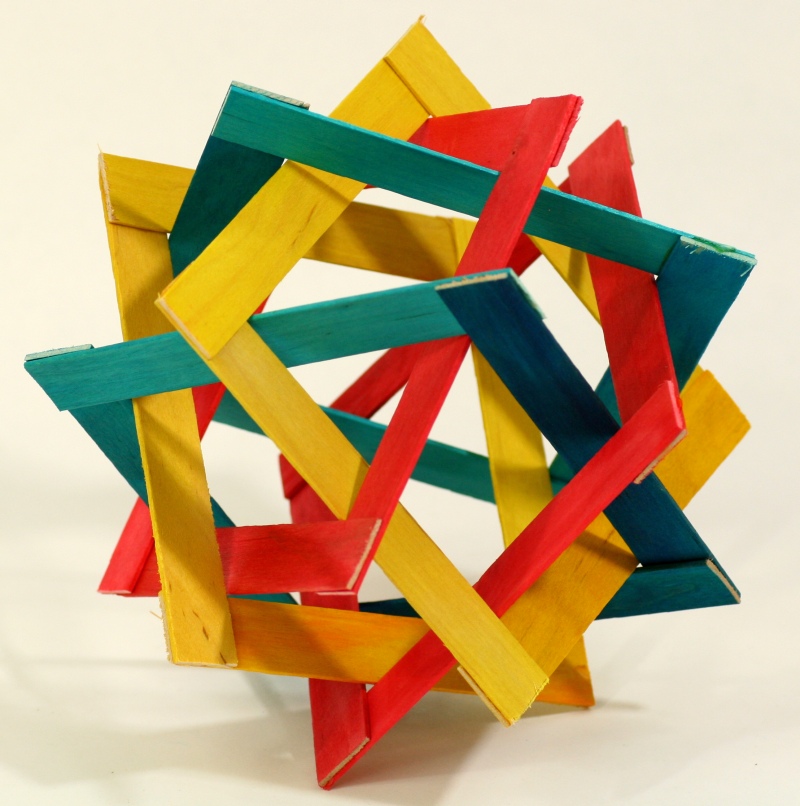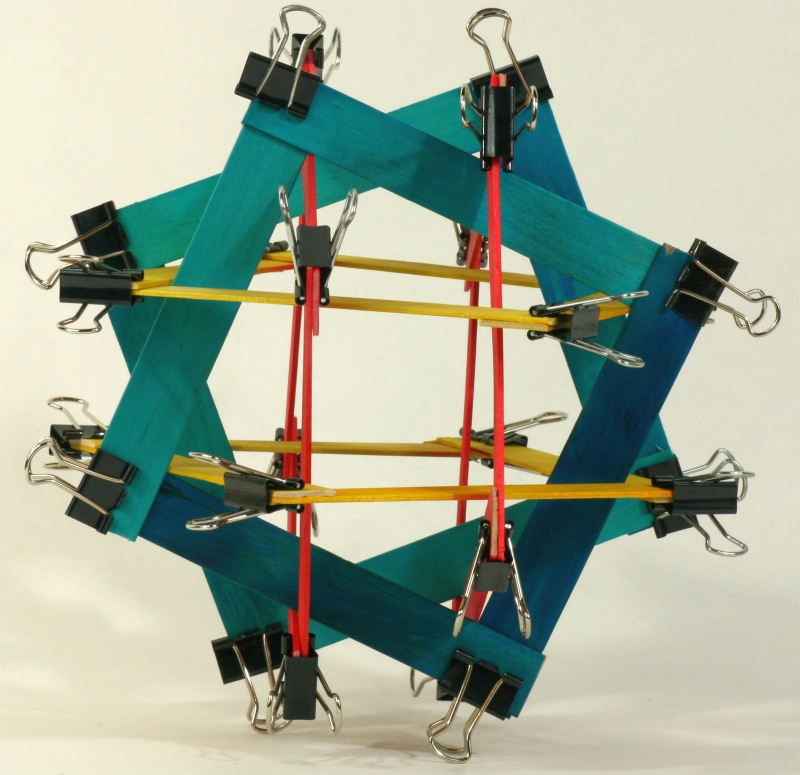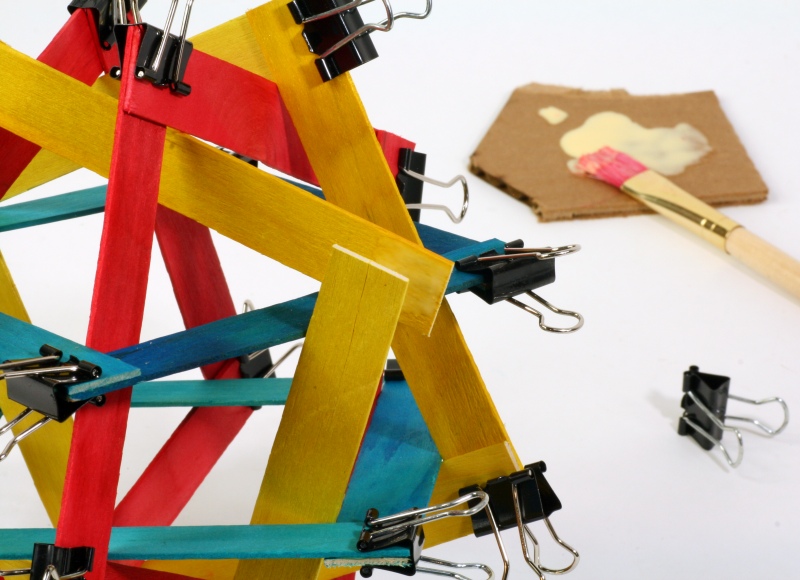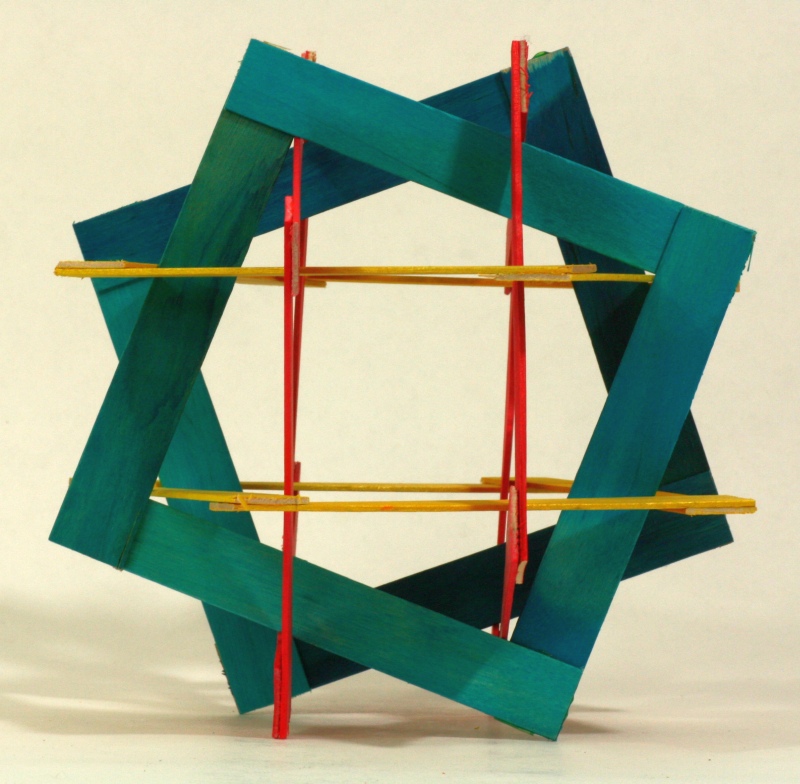This symmetric arrangement of six hollow squares
is a follow-on activity that can be done after the
four-triangles polylink. In some
ways it is more difficult, e.g., there are twice as many pieces,
24 sticks instead of 12, and squares may hinge into rhombuses
while the triangles were naturally rigid. But the fact
that it derives from the familiar structure of a cube may make
it easier for students to visualize and understand. Again,
we present it as a puzzle challenge and do not give detailed
instructions for every step. Student should enjoy the
satisfaction of finding their own solution path. Communicating
their different methods to each other can be an important part
of the experience.
The structure may seem inordinately complex from some
perspectives, e.g., the image above, but students can learn to
visualize, understand, and build it through this hands-on
exercise. The beauty and naturalness of the finished object
demonstrates to students that the world of mathematics holds
many surprising treats that they will discover over their
lifetime.
Time Required: 45 Minutes








